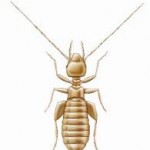Bed bugs also spelled bedbugs
Description:
Bed bug adults are reddish-brown, oval, flattened insects from 4 to 5 mm long and 1.5 to 3 mm wide before feeding. Engorged adults tend to be swollen and dull red. The eggs are white, oval, about 1 mm long and covered in a sticky film which allows them to adhere to surfaces. A newly hatched nymph is almost colourless whereas engorged nymphs are reddish and swollen.
Biology:
Although humans are the preferred host, bed bugs feed on many warm-blooded animals. Bed bugs usually hide in cracks or mattresses during the day and emerge at night to feed. They inject saliva as they feed and allergic reaction to this substance often causes slightly delayed swelling, itching and burning. Under favourable conditions, each female lays 200 to 500 eggs and at temperatures above 21°C these hatch in 6 to 17 days. Adults often survive up to 2 months without food, but under certain circumstances can live a year or more without feeding.
Control:
The first step to dealing with bed bugs is to locate all of their hiding places. Furniture, fittings and even crevices in wallpaper must be inspected carefully, even to the point of dismantling beds etc for easier inspection and possible treatment. Applications are best done as a “crack and crevice” treatment to known or potential harbourages, as well as using a broad band residual insecticide through a coarse sprayer or as an Ultra Low Volume Insecticide for the rest of the room. Products containing insect growth regulators can also aid control.


